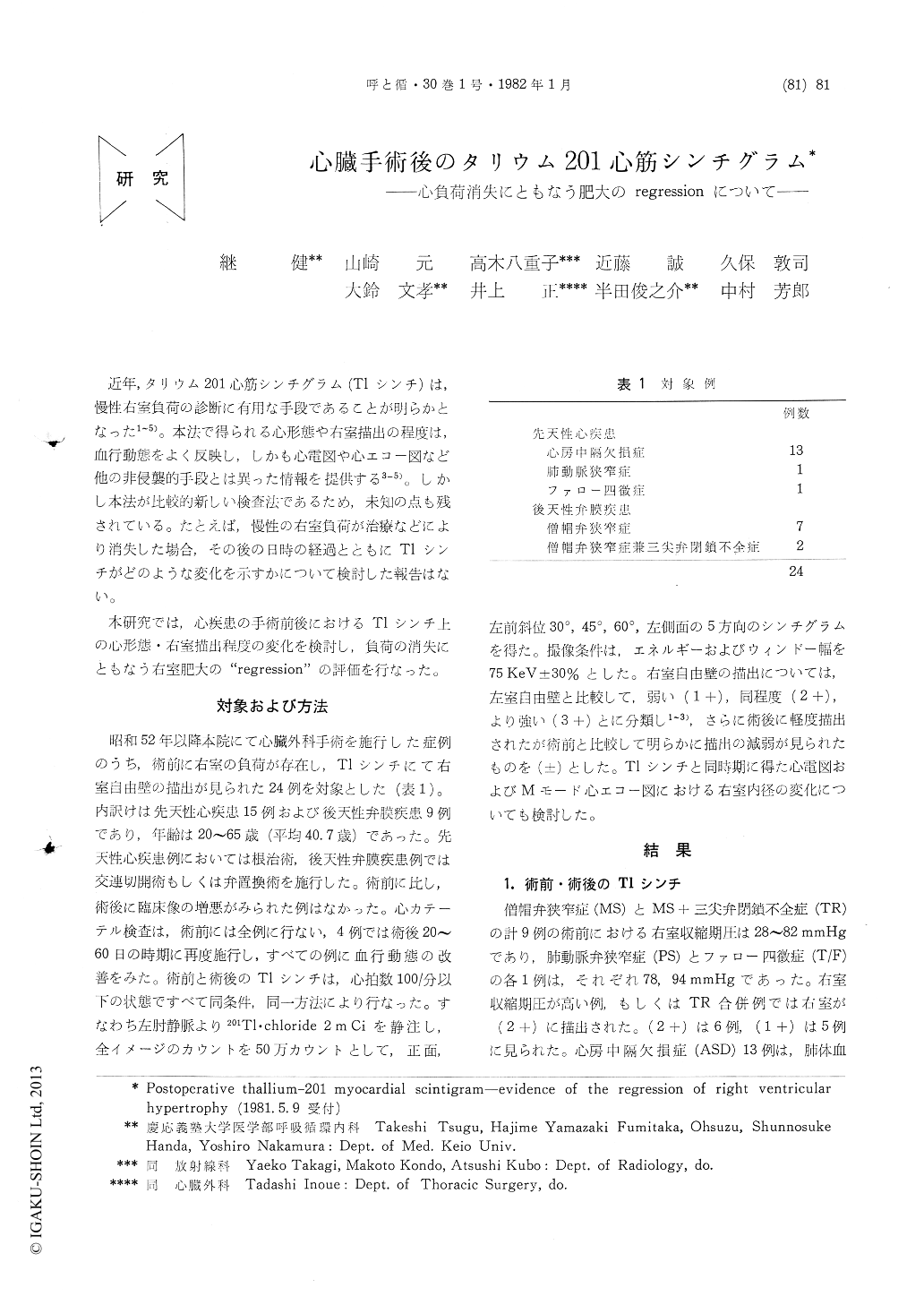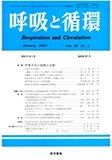Japanese
English
- 有料閲覧
- Abstract 文献概要
- 1ページ目 Look Inside
近年,タリウム201心筋シンチグラム(Tlシンチ)は,慢性右室負荷の診断に有用な手段であることが明らかとなった1〜5)。本法で得られる心形態や右室描出の程度は,血行動態をよく反映し,しかも心電図や心エコー図など他の非侵襲的手段とは異った情報を提供する3〜5)。しかし本法が比較的新しい検査法であるため,未知の点も残されている。たとえば,慢性の右室負荷が治療などにより消失した場合,その後の日時の経過とともにTlシンチがどのような変化を示すかについて検討した報告はない。
本研究では,心疾患の手術前後におけるTlシンチ上の心形態・右室描出程度の変化を検討し,負荷の消失にともなう右室肥大の"regression"の評価を行なった。
In cases with chronic right ventricular (RV) overload, visualization of RV on thallium-201 (Tl) images at rest is attributed to RV hyper-trophy (H). To assess whether RVH in man regresses after surgical correction of hemo-dynamic overload. postoperative Tl images were obtained in 24 adult cases with isolated RV overload who had visualized RV at preoperative period.The degree of RV visualization remained essentially unchanged, and decrement of RV cavity was observed in cases with atrial septal defect, within 3 months postoperatively. In contrast, RV visualization was definitely less in all cases at 18-33 months postoperative period. However, complete disappearance of RV, as in cases with normal hemodynamics, was not ob-served in this period.
These observation suggests that RVH is large-ly, if not completely, reversible even in cases with congenital heart disease.

Copyright © 1982, Igaku-Shoin Ltd. All rights reserved.


